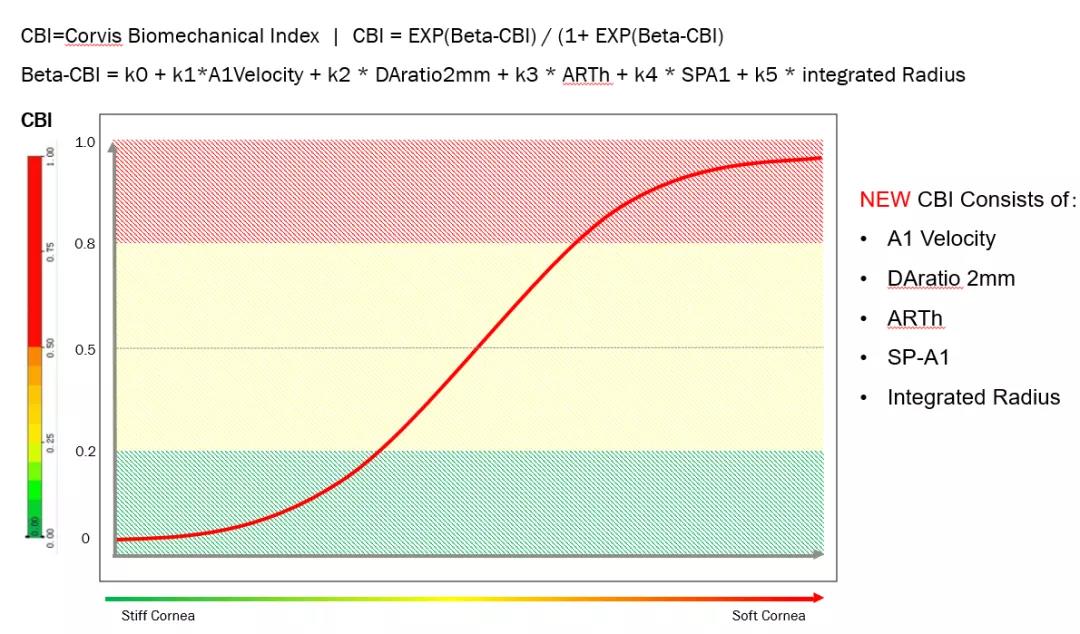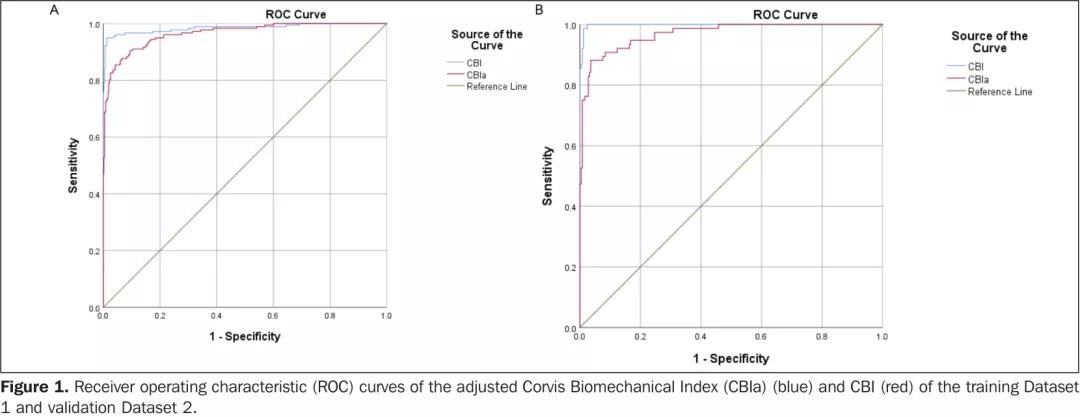 全国服务热线:400-661-8885
进入商城
全国服务热线:400-661-8885
进入商城
 全国服务热线:400-661-8885
进入商城
全国服务热线:400-661-8885
进入商城
Corvis Biomechanical Index(CBI)由意大利Riccardo和Paolo Vinciguerra开发,根据角膜生物力学反应检测早期圆锥角膜。
根据Cynthia Roberts教授和William Dupps教授的假设,角膜扩张的形态学改变只是早期生物力学改变的结果1。因此从理论上讲,可以首先根据角膜生物力学特性来检测角膜扩张。
CBI的算法基于不同动态角膜响应(DCR)参数、硬度参数和水平切面角膜厚度分布的logistic回归公式。并有多项研究证实,CBI能够检测到形态学改变前的亚临床或顿挫圆锥角膜2。

Steinberg团队提出一个观点:CBI是否应该考虑厚度参数Ambrósio’s Relational Thickness in the horizontal profile(ARTh)?并验证了去除ARTh的aCBI足以区分正常与圆锥角膜眼。然而此研究的样本量相对较小,缺乏验证人群来测试算法。
因此Vinciguerra团队基于658名患者再次对CBI和aCBI进行验证。研究结果显示,考虑ARTh的CBI比aCBI具备更好的准确性3。

ARTh作为厚度的修正参数和单独作为分离独立因素的双重基本作用解释了CBI的优越性。
参考文献
1.Biomechanics of corneal ectasia and biomechanical treatments.
Cynthia J. Roberts, William J. Dupps. et al.
Journal of Cataract & Refractive Surgery 40 (6), 2014, 991–998
2.Biomechanical Characterization of Subclinical Keratoconus Without Topographic or Tomographic Abnormalities.
Vinciguerra R, Ambrósio R Jr, Roberts CJ. et al.
Journal of Refractive Surgery 33(6), 2017: 399-440.
3.Should the Corvis Biomechanical Index (CBI) Include Corneal Thickness Parameters?
Vinciguerra R, Ambrósio R Jr, Roberts CJ. et al.
Journal of Refractive Surgery • Vol. 34, No. 3, 2018

服务热线

内蒙古丰信医药有限公司 / 丰信医药 / 内蒙古药品 / 内蒙古器械 / 购销平台